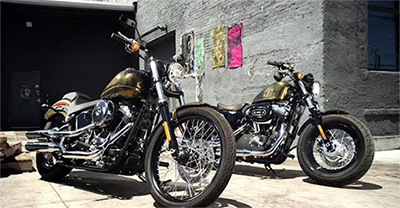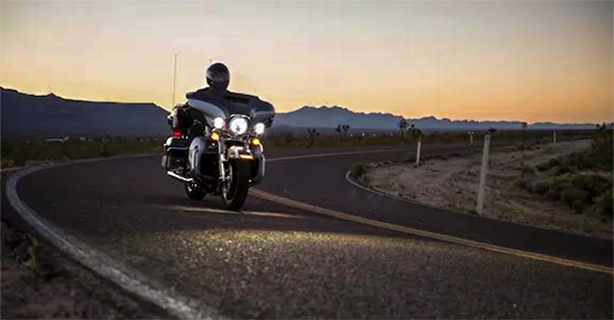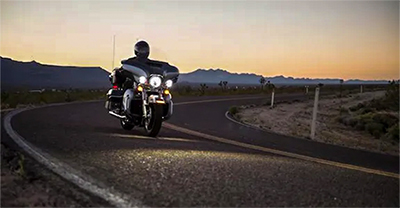Autumn rides are some of the best—until a deer crosses your path. As wildlife activity increases this season, a few adjustments can go a long way.
These deer motorcycle tips will help you stay prepared and alert, no matter what the road throws your way.
Deer season isn't just a concern for hunters. For motorcycle riders, especially those logging miles during fall or spring, it's a high-risk time for wildlife encounters.
Deer are most active during spring and autumn, making it essential for riders to adjust their habits accordingly. With motorcycles involved in a majority of deer-related accidents, knowing how to navigate this season can make all the difference.
This guide offers practical deer motorcycle tips to help you stay prepared, confident, and focused no matter where the road takes you.
WHAT TO KNOW ABOUT DEER SEASON
The deer season coincides with the spring and summer riding seasons.
As the weather gets more moderate, the deer begin to become more active while looking for mates.
At certain times of day (dawn and dusk), deer are especially active and cross through different territories looking for love.
They don't care if they are on a country road or the interstate; deer will cross a busy traffic lane regardless of oncoming traffic whenever they feel like it.
Deer often travel the same paths, which (luckily for us) are known to hunters and wildlife services. These deer crossings are often marked with special deer crossing signs, which need to be constantly scanned for.
Herds of deer often stay together, so when one is present, be extra cautious.
RIDING TIPS FOR DEER SEASON
Now that the deer population is estimated at around 30 million and growing, it's as important for every novice who just got their motorcycle license as it is for an experienced rider to know what riding in deer country means.
Dealing with wildlife removes rational factors from the situation. When they cross the road, they don't check for motorcycles or cars driving in the oncoming lanes.
That's why it's up to motorists to stay vigilant.
1. Master Emergency Maneuvers
Tactical Tip: Regularly practice quick stops and swerve techniques in a controlled environment.
Advanced skills save lives. Track days, parking lot drills, and MSF Advanced RiderCourses reinforce muscle memory and sharpen your reaction time. A deer can leap into your path in a heartbeat—do you know how to stop safely or swerve without losing control?
Reacting to different stimuli while riding a motorcycle will help smooth out riding when a real problem arises.
2. Ride At The Right Time Of Day
Tactical Tip: Avoid dawn and dusk rides during peak deer months (October-November, and April-May).
Deer are crepuscular animals, most active during low-light hours. Reduce your exposure by planning rides in full daylight.
Alcohol impairment and dark roads can lead to adverse conditions for motorcyclists. Combine these with bad weather or wet leaves, and you have highly dangerous low-light conditions that will limit your ability to see danger coming.
If you must ride early or late, choose routes with good lighting and minimal tree cover.
3. Gear Up With Purpose
Tactical Tip: Always wear ATGATT (All The Gear, All The Time), especially gear rated for impact protection.
Safety gear gets a bad rep in some motorcycling communities. One of the major factors in motorcycle fatalities is how much protective gear the rider wore.
A DOT or Snell-certified helmet, armored jacket and pants, abrasion-resistant gloves, and proper boots are your second line of defense.
4. Know Deer Behavior
Tactical Tip: Where there’s one deer, there are often more. If you see one deer, immediately slow down and cover both brakes.
Deer travel in groups and tend to follow the same game trails. Watch for animal crossing signs and scan the roadside far ahead. Use high beams when legal and safe to increase visibility.
5. Pre-Ride and Situational Awareness
Tactical Tip: Use a pre-ride checklist and ride with your head on a swivel.
Before every ride, check tire pressure, lights, and brake function.
Once moving, continuously assess your surroundings: Is that a fresh carcass on the shoulder? Are cars ahead tapping their brakes?
6. Consider The Road
Tactical Tip: Assess every road as you ride. Note the traffic flow ahead of you, and pay attention to frost, ice, or animal activity.
Rural roads are especially hazardous in deer season. Ride slower through wooded areas and maintain a buffer zone from vehicles ahead so you can spot hazards early.
WHAT NOT TO DO
Don’t speed up to pass a deer. It might spook and run into your path.
Don’t trust deer whistles. Studies show they are largely ineffective.
Don’t grab the brakes. Smooth, progressive input is safer.
Don’t ride tired or distracted. Reaction time matters.
Don’t assume the deer will act logically. They won’t.
Final Pro Tips
Upgrade your lighting for better night visibility.
Ride with others when possible—extra eyes can spot danger.
Review your motorcycle insurance for comprehensive coverage, including medical and gear replacement.
STAY ALERT
Riding through deer season doesn’t have to mean riding on edge. With the right habits, gear, and a little extra attention to your surroundings, you can enjoy the road ahead with confidence.
Keep sharpening your skills, stay alert during those peak activity hours, and remember—be prepared.
Stay smart, ride safe, and enjoy the journey.

Whether it happens to you or you happen to be the first person on the scene, these are the crucial steps to know in case of a motorcycle mishap. Learn more!

No matter what type of bike you ride and no matter what type of coverage you need, here are 16 motorcycle insurance money-savers you may qualify for. Learn more!

Explore the functions of the motorcycle helmet shield and a step-by-step approach to cleaning and maintaining it using simple yet effective materials.

Many things affect the average cost of motorcycle insurance coverage. Age may be a big factor. Discover what premium you can expect as you age!



